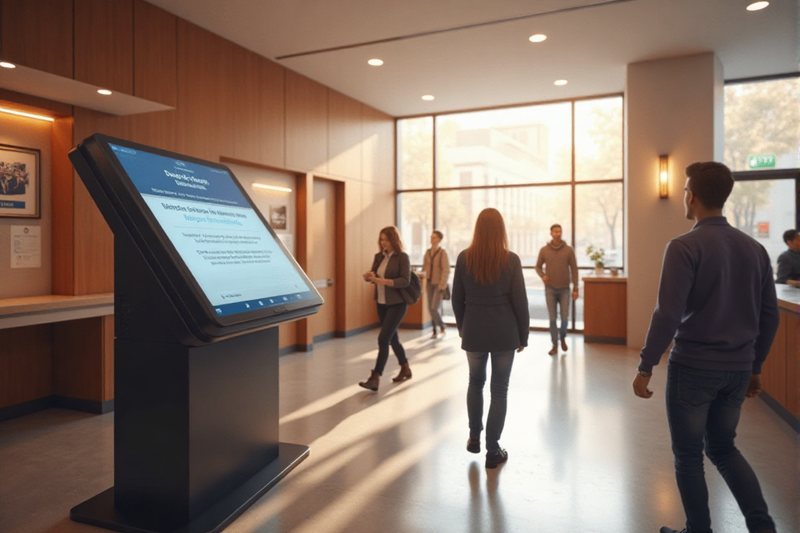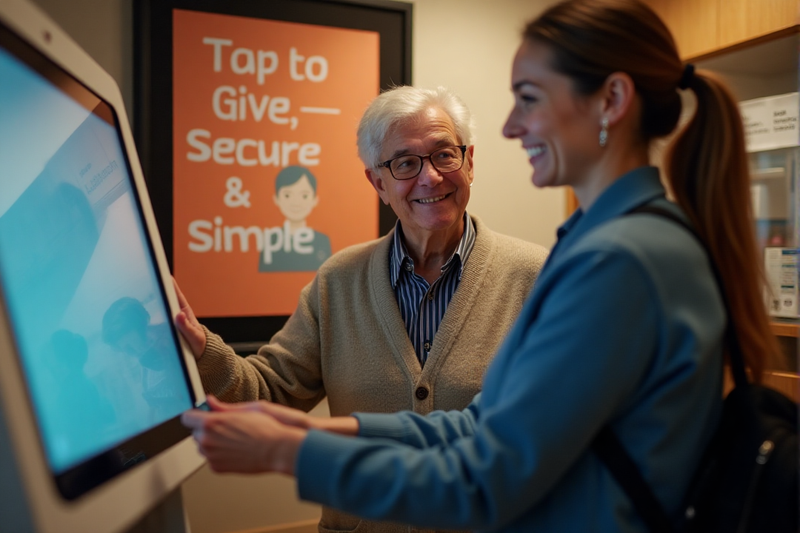In the past, donations were either check contributions sent through the mail or cash placed in a box, particularly during Sunday services. Things have now changed, and donors now reside in a digitally focused and fast-paced environment.
This is where donation kiosks are coming in.
Especially in the non-profit world, these tools have been helpful in prompting renewal in fundraising strategies and supporting donations outside of traditional times. In this article, we will see the innovative ways through which nonprofits are using donation kiosks throughout the week and not just on Sunday mornings.
What Are Donation Kiosks?
Donation kiosks are devices through which people can give donations using cards or mobile services. They can also be:
Service kiosks set-up in venues and events
Tablet- or mobile-based kiosks used remotely
Screen interfaces that walk users through the steps to donations
Most kiosks are connected to the internet and offer donation kiosk benefits such as real-time donation tracking, customizable campaigns, and receipt generation.
Primary Advantages of Donation Kiosks:
The convenience of fast, secure payments
Elimination of paperwork
Collection of donor information
Engagement through different forms of interactivity
Why Nonprofits Are Embracing Donation Kiosks
Nonprofits are adopting donation kiosks for several reasons:
Donor Enablement: Removes the need for cash or checks.
Donor Experience: More pleasant than a form.
Work Efficiency: Streamlines fund tracking.
Significant Reduction in Processing Time: Donors can subscribe to recurring donations with a few clicks.
This is particularly beneficial for younger people and busy professionals.
Creative Year-Round Uses of Donation Kiosks
These kiosks are not limited to use during services or events. Nonprofits have found year-round themed uses, like:
1. Seasonal Campaigns and Holiday Drives
Enhancing seasonal campaigns is simple with donation kiosks. Visuals themed to the holiday, along with specific goals, can entice more donations:
Christmas drives to sponsor families or provide holiday meals.
Thanksgiving food drives for feeding the needy.
New Year’s matching donation initiatives.
These setups are not only visually appealing but also actively promote unsolicited donations.
2. Special Occasions and Local Festivals
Community fairs, markets, and gatherings attract large crowds. Nonprofit organizations set up kiosks at event booth entrances to:
Collect new donors
Advertise their helpful work
Receive money in a joyous and public way
Kiosks capture passive attention, and convenience transforms curiosity into active support.
3. Charity Walks, Runs, and Other Fundraising Events
Kiosks set up for charity purposes help with the following streams of funding:
Facilitate last-minute giving
Count and display donations in real-time
Provide patrons the ability to donate either in the beginning or tail of the event
Mobile donation kiosks are particularly good for fundraisers held outdoors.
4. Programs Mobile and Unit Outreach
With certain nonprofit organizations come mobile clinics for health issues, food industry trucks, or community outreach vans. Outfitting these vehicles with kiosks means:
During services, donors are able to contribute funds
Donating becomes part of the service advocacy.
Donations finance that specific outreach.
This is a win-win for transparency and multitasking convenience.
5. Giving In Office or Pre-Appointment Gifts
Kiosks set up in the lobby of a nonprofit’s office as well as allied institutions such as hospitals, schools, and even libraries encourage passive donation. Active givers who are in a queue or strolling by can donate hands-free while engaging with the cause.
6. Youth and School Programs
Youth and school groups often conduct fundraising activities. Donation kiosks:
Enhance convenience for users to give monetarily for the teachers, the pupils, and their guardians.
Reward them with interactive goals for campaigns, and enable cashless payments through envelopes.
This is an intelligent approach to initiating the donor cultivator process so early in life.
Features That Make Kiosks Effective Year-Round
Turn Donor Interactions to Impact with Experiential Fundraising: The Future of Nonprofit Fundraising
Donation drives around the year can be made more effective by incorporating advanced features focused on the kiosk.
Customizable Themes: Change graphics and texts for campaigns or seasons.
Support of many languages: Engage featured communities in the language of their choice.
Inclusion of QR codes: Allow users to scan and give from their devices.
Automated Receipts: Send emails or texts instantly confirming donations.
The kiosks remain useful and retain their relevancy while still being engaging and focused on the donor.
Best Practices for Using Donation Kiosks
The guidelines to remain effective within the setup are:
Embellished Instructions: Show users how to use the kiosks with basic steps alongside visuals.
Informative Image Narratives: Tell your tale using videos and images.
Trained Personnel: Staff and volunteers must be able to answer all queries.
Regularly revise the content by changing the message, information, and images.
Promotion of the Place: Utilize advertisements through social platforms as well as emails to expose the location of the kiosks.
Effective donation management can transform one-time givers into lifelong patrons.
Common Challenges and How to Fix Them
Like any tech, kiosks have some downsides. Here’s how nonprofits can tackle them:
Challenge
Solution
Technical issues
Work with a reliable vendor, do regular maintenance
Donor hesitation with new tech
Offer step-by-step guidance and personal help
Outdated content
Set reminders to refresh screens and campaigns
Internet/power issues
Use kiosks with offline capabilities or battery backups
Proactive planning helps ensure kiosks run smoothly and consistently.
Success Indicators: Impact Assessment
To assess kiosk effectiveness, the following metrics can be monitored:
Total donations collected
Average donation amount per kiosk
Number of interactions and conversions
Time spent on screen or campaign engagement
Recurring donor sign-ups through kiosks
These metrics are essential to reinforcing campaign effectiveness while offering direct value to stakeholders.
Conclusion
Donation kiosks weren’t made exclusive to services or annual galas. They serve as powerful technology that enables nonprofits to raise funds, manage community relations, and share their missions 365 days a year.
Non-profits can now compute the true impact of their kiosks and remain in touch with their communities through content, interactions, campaigns, and targeted placements that matter deeply.








Top comments (0)